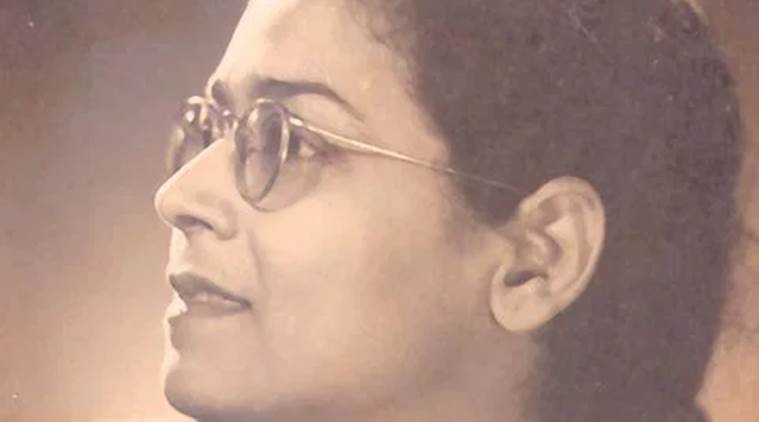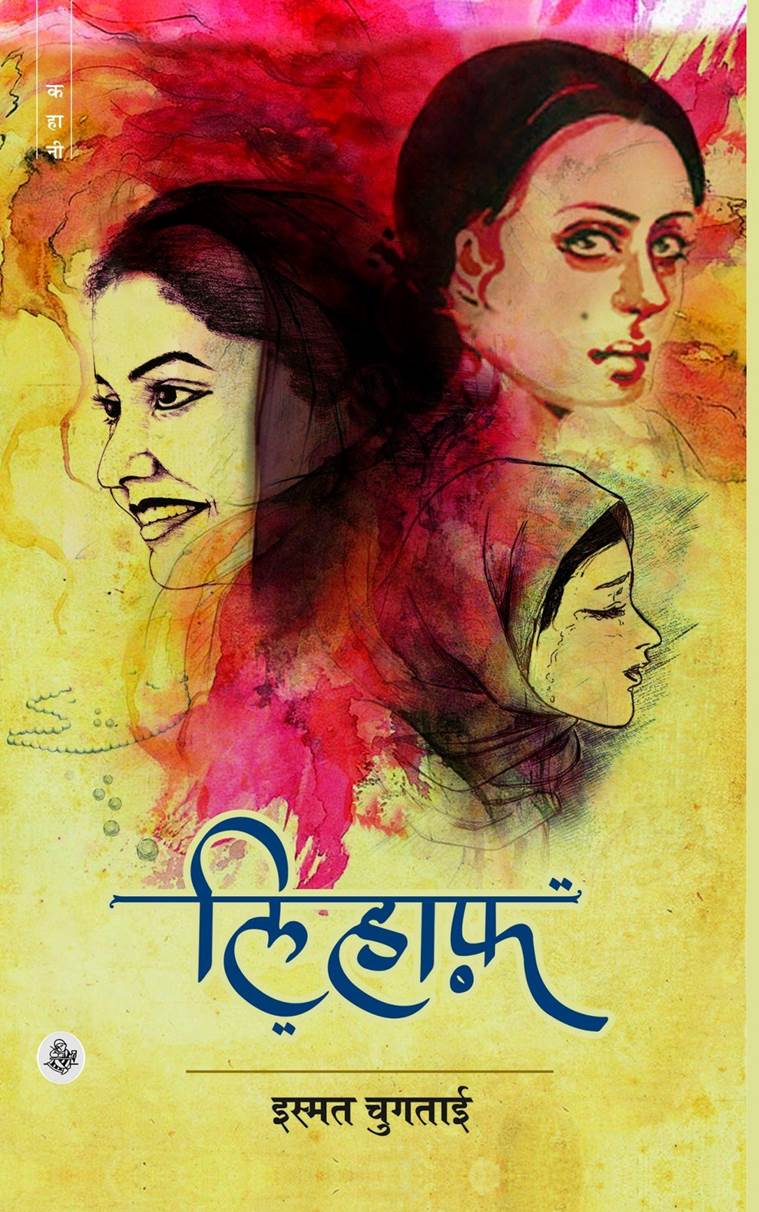Decoding the ‘feminist’ in Ismat Chughtai’s most (in)famous short story, Lihaaf
Ismat Chughtai's Lihaaf, indisputably, remains one of her most (in)famous works and the controversy it sparked hung like a perceptible shadow over everything Chughtai wrote after that. The story was charged with obscenity and she was summoned to Lahore to defend it.
Written by Ishita Sengupta | New Delhi | Updated: August 22, 2018 9:45:19 pm

Published in 1942 in a literary magazine- Urdu Adab-i-Latif, Ismat Chughtai’s Lihaaf or The Quilt is posited in the household of a Nawab. (Source: File Photo)
“I am still labeled as the writer of Lihaaf. The story brought me so much notoriety that I got sick of life. It became the proverbial stick to beat me with and whatever I wrote afterward got crushed under its weight,” Ismat Chughtai wrote in her memoir, A Life in Words. One can identify a sense of regret laced with anger in Chughtai’s words. Lihaaf, indisputably, remains one of her most (in)famous works and the controversy it sparked hung like a perceptible shadow over everything that Chughtai wrote since. The story was charged with obscenity and she was summoned to Lahore to defend it. Sadat Hassan Manto, who referred to Lihaaf as the as the “only great story” Chughtai had written, was there too. He was defending his story, Bu that faced similar charges.
Published in 1942 in a literary magazine – Urdu Adab-i-Latif, Lihaaf or The Quilt, is set in the household of a Nawab. Chughtai, with her discerning eye for detail, writes about his virtuousness — “No one had ever seen a nautch girl or prostitute in his house”, his strange hobby — of keeping his house open for “students — young, fair and slender-waisted boys whose expenses were borne by him”, and his negligence towards his wife, Begum Jan. The story, narrated by a woman, is mostly recounted by her from the time when she was a child and was left with Begun Jan by her mother. What follows is the child’s documentation of the time spent there — her incomprehension of Begum Jan and her servant Rabbu’s friendship, her horror on seeing the quilt, used by Begun Jan, taking puzzling shapes on the wall at night and her fright when Begum Jan asks her, “How many ribs does one have?” and proceeds to find out.
Lihaaf: Feminist or not?
“Ismat began writing at a time when South Asian women were still sequestered and their voices suppressed,” writes Farhat Bano in her thesis, The emergence of feminist consciousness among Muslim women the case of Aligarh. Perhaps this accounts for the kind of controversy Chughtai had to court on account of the story. Much like her other works, Chughtai in Lihaaf unabashedly wrote about female desires and wants and thereby even acknowledged them.
Left alone by her husband, Chughtai’s protagonist Begun Jan takes charge of her life and navigates her way through the bindings of the patriarchal setup to express her sexual urges and satiate them. But Chughtai places a lihaaf or a quilt of vagueness and euphemism over her writing as she explores the homoerotic theme in her story. Nothing is ever said aloud and the ploy of using a child narrator and borrowing her lexicon to recount the story serves Chughtai’s purpose well.
Although veiled, the references were not missed by the readers. Lihaaf gained Chughtai notoriety as well as the epithet of being a radical feminist author — almost putting her next in line to Rashid Jahan, who too had raised the ire of the general populace by writing about the oppression faced by women. The story, over the years, has emerged as a fitting example of the triumph of feminism and Begum Jan is often viewed as the champion of it. She might be secluded in her husband’s household but she uses the imposed seclusion to her advantage. Left alone in the zenana, she creates a world for herself. Once in there, she is no longer at the mercy of the Nawab to placate her urges. She can unhesitatingly voice an “itch”— on which her entire existence revolved— and find the necessary means in Rabbu to tend it. And she does.
“Although outwardly she (Begum Jan) abides by the patriarchal norms and possesses all the traits necessary for a virtuous woman in a patriarchal set-up, it is within the zenana that she refuses to give up her needs and desires for sexual satisfaction even if the only way left to her is to fulfil them by resorting to a deviant way of sexual relationship,” writes Tanvi Khanna in her article, Gender, Self Representation and Sexualised Spaces: A Reading of Ismat Chughtai’s Lihaaf, acknowledging Begum Jan’s agency. The zenana then becomes a feminist utopia where women seem to be reliant only on each other and where desires can be voiced and placated. “It (zenana) becomes a space for the expression of subversive desires under the garb of normalcy,” she adds.
“Lihaaf is not a queer-friendly tale,” says Anupama Mohan, Assistant Professor at Presidency University. Mohan, in her argument, departs sharply from the general accepted reading of the text. She has written about the same in an upcoming article. “In order to appreciate the richness of the text, you need to read it in its full potential and not merely cherry pick,” she says. It is not hard to guess that reading the text just as a feminist narrative — one that glosses over the class divisions and the molestation faced by the child narrator— is what Mohan refers to as a selective reading.
Begum Jan might have created her world in the zenana but enough evidence in the narrative bear testimony to the fact that it increasingly resembled “the drawing-room door” that the Nawab had opened for the “firm-calved, supple-waisted boys”. They might be two different physical spaces but they mirror each other in the purpose that they serve.
“Begum Jaan’s self-empowerment needs to be seen in tandem with her class and sexual domination over Rabbu first, and then over the child narrator,” Mohan says. The relationship that Rabbu has with Begun Jan might be seemingly homoerotic but it is not equitable. Rabbu is dependant on Begum Jan and is situated in a social stratum much lower to hers. Their relationship is then akin to a transaction as Rabbu is reduced to a pair of hands and Begum Jan is transformed into a sexual predator, merely feeding on her prey without reciprocating. “Rabbu’s body is fragmented and is used mainly as a passive toy by Begum Jan” Mohan says.
So subsumed is Begum Jan in her desire and the need to satiate them that the only time she indulges the narrator is when the latter “rubs her back” to lessen her “itch”. Begum Jan is bereft of any maternal instincts and sees the narrator merely as a replacement of Rabbu. Her de-formation as a predator is complete when she tries to molest the narrator, disregarding her age and the fact that the latter was left to her care.
Lihaaf: Treading the middle ground
This, however, does not make Lihaaf any less of a feminist text even though it might challenge some accepted tenets of feminism. Chughtai blurs the lines between the powerful and the powerless untill each resembles the other in their morbidity.
“Lihaaf is a text that challenges some of the key tenets of a certain kind of feminism. For example, what are we to make of the Begum’s transformation into a sexual predator? Are we to see her “de-formation” as itself a response to her patriarchal domination by the Nawab and by her immediate hyper-conservative milieu? Or would we say, since we want to call her agential that she’s a hero and villain of her own making?” Mohan asks.
Reading the text merely as a feminist text also has led to our misplaced identification of who is the feminist in Chughtai’s story. Mohan believes it is not Begum Jan but the child narrator who can be deemed be as a feminist . “I think, the kernel of “Lihaaf‘s” feminist self-understanding lies in the child narrator who, in defiance of her own mother’s parenting, can think of an egalitarian, open relationship with her brothers and common male friends (instead of only “collecting aashiqs” as young girls, we are told, were wont to do at her age) and who, even at her most terrified, gathers courage and speaks up (“I spoke with courage, but no one heard me!”)”. Her defiance results in her mother sending her to Begum Jan and the zenana, that was supposed to empower her, punishes her instead- silencing and pacifying her. “This punishment was much more severe than I deserved for fighting with my brothers,” the narrator says.
Much of the relevance of the text lies in Chughtai’s ability to interweave themes of class, gender and sexuality and resist a binarised reading. Such a reading is approved by Mohan. “When read in a multi-dimensional way, Lihaaf yields rich dividends for the scholar who wants to go beyond the banal assurances of an unreflexive identity-politics and wants to understand the ways in which literature brings alive the complexity of social interrelationships.”
Chughtai, while writing about the time she came to know about the obscenity claims, had described Lihaaf as “an ill-fated story” that had become “a source of torment” for her. While the author might have been right about it being “a source of torment”, the relevance of the text shows how wrong she was about it being “ill-fated”.
For all the latest Lifestyle News, download Indian Express App
© IE Online Media Services Pvt Ltd






















 Lihaaf remains Ismat Chughtai’s most enduring work, (Source: Amazon.in)
Lihaaf remains Ismat Chughtai’s most enduring work, (Source: Amazon.in)
No hay comentarios:
Publicar un comentario